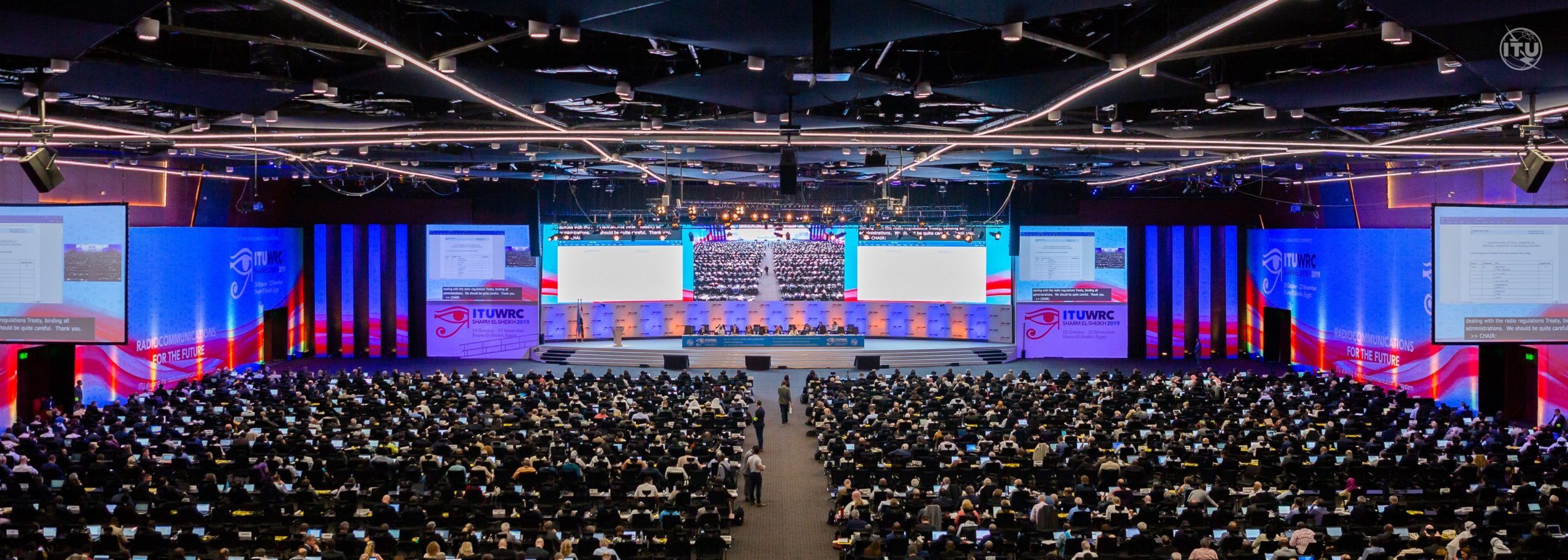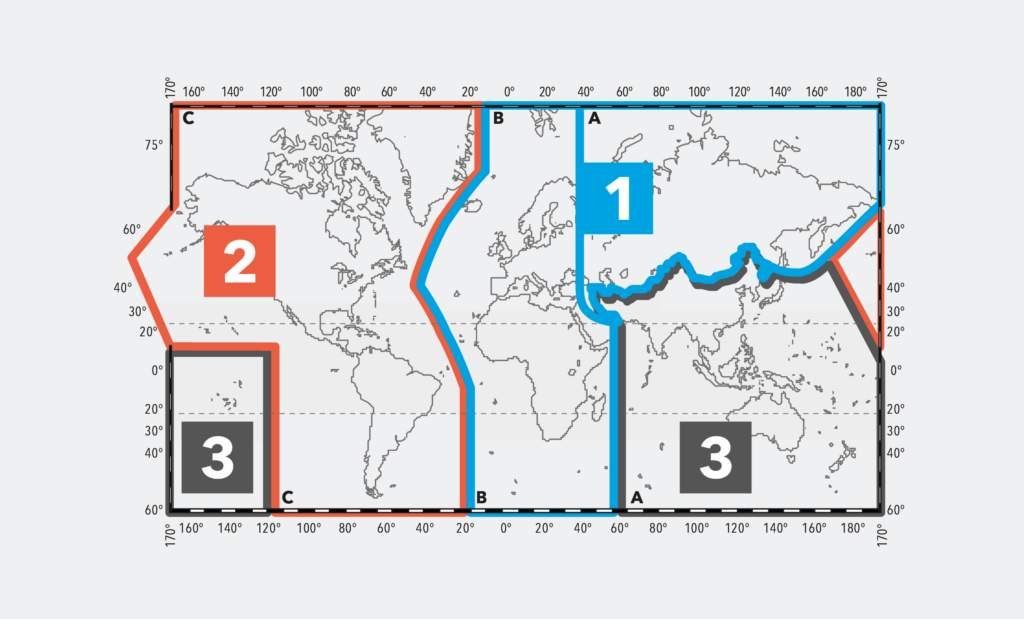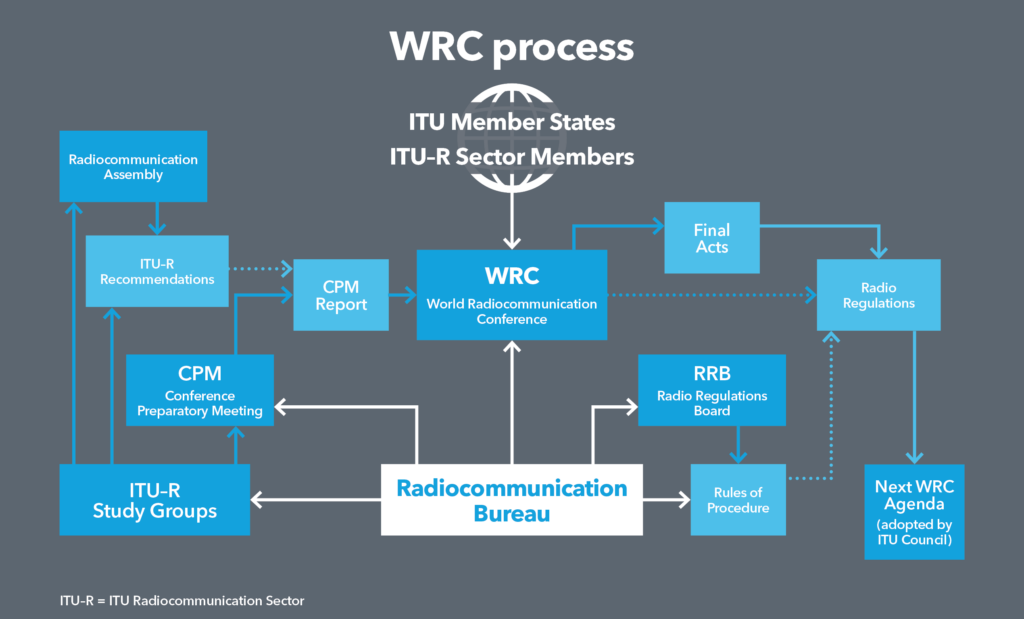
WRS-22: Global harmonization paves road to WRC-23
By ITU News
Every four years, radiocommunication authorities and experts gather to update the Radio Regulations, the international treaty governing the world’s radio frequency spectrum and increasingly crowded satellite orbits.
At these quadrennial World Radiocommunication Conferences, or WRCs, Member States of the International Telecommunication Union (ITU) review and sometimes revise both the way specific portions of the radio spectrum are allocated and the coordination, notification and recording procedures for frequency assignments.
Those negotiations and agreements also, typically, pave the way for introducing new radio-based services and systems all over the world.
The next WRC, taking place in Dubai, UAE, from 20 November to 15 December 2023, represents a crucial decision-making juncture.
Humanity’s shared digital future depends on a growing number of devices, services and products that rely on limited radio frequency spectrum.
ITU Study Group Counsellor Philippe Aubineau recently explained the complexities underlying the planning and preparation for this relatively little-known yet highly consequential global conference.
Why harmonize spectrum?
Spectrum harmonization reduces the potential for harmful interference. This enables interoperability and international roaming, allowing citizens to use the same device in different countries, explained Aubineau in October at the World Radiocommunication Seminar (WRS-22).
Harmonization of spectrum boosts economies of scale, making devices and services more affordable, he added.
Crucially, it also supports reliable emergency communications – an increasingly important consideration given the worsening impacts of climate change.
Regional alignment
To facilitate efficient regulation of the radio spectrum, the world has been divided into three regions for the allocation of frequencies. These are: Region 1, covering Europe, Africa, and most of northern Asia; Region 2, covering the Americas; and Region 3, covering South Asia and Australasia.

ITU’s Member States collaborate in the preparations for its major conferences, including for WRCs, through six different regional groups: the Asia-Pacific Telecommunity (APT), the Arab Spectrum Management Group (ASMG), the African Telecommunications Union (ATU), the European Conference of Postal and Telecommunications Administrations (CEPT), the Inter-American Telecommunication Commission (CITEL), and the Regional Commonwealth in the Field of Communications (RCC). Each of these regional groups works to establish their regional positions ahead of each WRC.
The six regional groups also periodically exchange views, consolidate positions, and resolve potential differences on WRC agenda items. The most recent inter-regional gathering highlighted possible solutions related to key WRC-23 topics.
Other institutions with a role in spectrum management, such as the International Civil Aviation Organization, the World Maritime Organization, and the International Maritime Organization, shared their views, while a special session with the International Bureau of Weights and Measures (BIPM) examined the definition of time scale and the dissemination of time signals via radiocommunication systems.
The multi-stakeholder approach facilitates consensus and helps create a stable, predictable, universally applied regulatory framework. This, in turn, underpins long-term investments in radio systems and telecommunications infrastructure.
The third and final inter-regional workshop ahead of WRC-23 is set for the end of September.
The WRC cycle
Aubineau also explained the series of meetings and preparatory work that happens within the ITU Radiocommunication Sector (ITU-R) during the four years between the flagship global conferences.
The final report of the Conference Preparatory Meeting (CPM) must be available five months prior to each WRC to allow Member States to consult and prepare their final proposals.
The CPM report takes years to prepare, with Working Parties from ITU-R’s six Study Groups contributing draft regulatory or technical solutions to “satisfy” relevant WRC agenda items.
“We are now reaching the end of the ITU-R Study Group preparatory phase,” Aubineau said.
“The First Session of the CPM for WRC-23 (or CPM23-1) was held already, and issues for the next WRC agenda will be reviewed at the Second Session for WRC-23 (or CPM23-2) in spring 2023.”

ITU-R’s private-sector members contribute throughout the preparatory process.
“Even if sector members cannot propose directly to WRC, they can actively contribute to CPM studies,” Aubineau noted.
As CPM-23 resumes in Geneva, Switzerland from 27 March to 6 April 2023, it will consider contributions from ITU Member States and ITU-R Sector Members, as well as from other expert international bodies, toward the adoption of the final CPM Report to the 2023 World Radiocommunication Conference.
The Network of Women for WRC-23 (NoW4WRC23), active since 2020, aims to boost women’s involvement at the conference, in line with a WRC-19 declaration calling for gender parity across ITU-R.
Unpacking the agenda
In every conference cycle, the first agenda item groups together various specific, new items, which differ at each WRC.
For WRC-23, items 1.1 to 1.5 relate to mobile and broadcasting services, including international mobile telecommunications (IMT) and high-altitude platforms as IMT base stations (HIBS), operating at altitudes of 20-50 kilometres at fixed points above the Earth.
Items 1.6 to 1.11 focus on digital technologies for aviation, including sub-orbital vehicles, as well as new spectrum needs and allocations for safety-of-life and maritime communications services.
Items 1.12 to 1.14 cover spaceborne radar sounders, along with the spectrum requirements for passive remote-sensing Earth-observation activities – otherwise known as science services.
Lastly, items 1.15 to 1.19 deal with satellite regulatory issues, including Earth stations in motion (ESIM) in the geostationary orbit (GSO) fixed-satellite service (FSS) Ku band; inter-satellite links and mobile satellite service for the Internet of Things (IoT) in the L and S bands; and other satellite-related topics.
Successive WRCs also include recurrent tasks, outlined in standing agenda items 2-10:
- Incorporation of revised ITU-R Recommendations by reference in the Radio Regulations
- Consequential changes and amendments to the Radio Regulations
- Review of Resolutions and Recommendations of previous WRCs
- Review of the Radiocommunication Assembly report
- Identifying items requiring urgent action by ITU-R Study Groups for the next WRC (2027)
- Reviewing procedures related to the coordination, notification, and registration of satellite network frequency assignments to facilitate the rational, efficient, and economical use of radio frequencies and any associated orbits
- Considerations about deleting country names from Table of Frequency Allocations footnotes (Article 5 of the Radio Regulations)
- Consideration and approval of the ITU Radiocommunication Bureau Director’s report on ITU-R activities, difficulties in the Radio Regulations, and ITU-R Resolution 80 on the WRC process and preparations
- Approving the agenda for the next WRC (2027) and suggesting a preliminary agenda for the subsequent WRC (2031)
Throughout the four-week conference, WRC delegates will try to strike a delicate balance between ensuring worldwide harmonization and maintaining flexibility in spectrum allocations. This is essential to continually accommodate new and emerging technologies and spectrum uses while protecting existing radiocommunication services.
This is the final instalment of a special ITU News blog series featuring insights from the 30th World Radiocommunication Seminar, encompassing the latest trends in broadcasting, international mobile technologies, maritime communications, terrestrial services, and more.
For a closer look at the upcoming World Radiocommunication Conference, check out the latest ITU News Magazine.
